Key Takeaways
1. Stocks: The Best Long-Term Investment for Owning Successful Companies
"Because there are only two numbers involved in the dividend yield, if one number remains constant, then the other number drives any changes."
Stocks offer ownership. When you buy stocks, you become a partial owner of a company, sharing in its successes and failures. This direct link to business performance makes stocks powerful wealth-building tools.
Long-term outperformance. Over extended periods, stocks have consistently outperformed other asset classes like bonds and cash. The stock market has returned about 10.5% annually over the past 75 years, compared to 4.5% for corporate bonds and 3.3% for U.S. Treasuries.
Key benefits:
- Capital appreciation: Profit from rising stock prices
- Dividends: Regular income from company profits
- Compound growth: Reinvested dividends and gains accelerate wealth accumulation
- Hedge against inflation: Stock returns have historically outpaced inflation
2. Combining Growth and Value Strategies for Optimal Returns
"The question is not growth or value, but where is the best value?"
Balanced approach. Successful investing often involves combining elements of both growth and value strategies. This balanced approach allows investors to capitalize on multiple opportunities while mitigating risks.
Growth focus. Growth investors seek companies with rapidly increasing earnings and sales, often willing to pay higher prices for future potential. They look for:
- Strong earnings growth
- Increasing market share
- Innovative products or services
- Expanding industries
Value emphasis. Value investors search for undervalued companies trading below their intrinsic worth. They focus on:
- Low price-to-earnings (P/E) ratios
- High dividend yields
- Strong assets and cash flows
- Turnaround potential
By combining these approaches, investors can build a diversified portfolio that captures both the upside of growth stocks and the stability of value investments.
3. Master Investors' Wisdom: Graham, Fisher, Buffett, Lynch, O'Neil, and Miller
"Be fearful when others are greedy, and be greedy when others are fearful."
Timeless principles. The wisdom of legendary investors provides a foundation for successful investing strategies. Each master offers unique insights that, when combined, create a powerful framework for decision-making.
Key lessons from master investors:
- Benjamin Graham: Focus on intrinsic value and margin of safety
- Philip Fisher: Seek high-quality growth companies with strong management
- Warren Buffett: Buy wonderful businesses at fair prices
- Peter Lynch: Invest in what you know and understand
- William O'Neil: Use quantitative and qualitative factors to identify market leaders
- Bill Miller: Look beyond traditional value metrics to find undervalued opportunities
These principles emphasize thorough research, long-term thinking, and the importance of understanding a company's fundamental strengths before investing.
4. Historical Lessons: Price-to-Sales and EBITDA/EV as Superior Valuation Metrics
"Free cash flow yield is the single best predictor of excess return."
Evidence-based metrics. Historical analysis reveals that certain valuation metrics consistently outperform others in identifying undervalued stocks with potential for superior returns.
Key findings:
- Price-to-Sales (P/S) ratio: A more reliable indicator than the popular P/E ratio
- EBITDA to Enterprise Value (EBITDA/EV): Provides a more comprehensive view of a company's value
- Relative price strength: A useful growth factor when combined with value metrics
Investors should prioritize these metrics in their stock analysis, as they have demonstrated superior predictive power for future returns over long periods.
5. Building a Core Portfolio with Permanent Strategies
"Lowest average cost wins."
Systematic approach. Establishing a core portfolio using proven, permanent strategies provides a stable foundation for long-term investing success.
Key permanent portfolio strategies:
- Value averaging: Systematically invest more when prices are low and less when high
- Dow dividend strategies: Focus on high-yielding, quality blue-chip stocks
- Leveraged index investing: Amplify returns of broad market indices
These strategies offer:
- Consistent performance over time
- Reduced emotional decision-making
- Automatic buy-low, sell-high mechanics
- Diversification across major market segments
By implementing these permanent strategies, investors can create a reliable core portfolio that weathers market volatility while positioning for long-term growth.
6. The Art of Stock Selection: Researching and Tracking Potential Investments
"If it's in the papers, it's in the price."
Systematic research. Developing a structured approach to researching and tracking potential investments is crucial for identifying promising opportunities and avoiding costly mistakes.
Key elements of effective stock research:
- Utilize diverse information sources: Financial statements, industry reports, news articles
- Focus on fundamental metrics: Earnings growth, profit margins, return on equity
- Track competitive landscape: Understand a company's position within its industry
- Monitor insider activity: Follow management's buying and selling patterns
- Maintain a watch list: Regularly update a list of potential investments for future consideration
Implementing a disciplined research process helps investors make informed decisions based on facts rather than emotions or market hype.
7. Emotional Discipline: Buying Low, Selling High, and Avoiding Market Noise
"Don't just do something, sit there."
Controlling emotions. Successful investing requires the ability to manage emotions and make rational decisions, especially during periods of market volatility or uncertainty.
Strategies for emotional discipline:
- Develop a clear investment plan and stick to it
- Use dollar-cost averaging to reduce timing pressure
- Set predetermined buy and sell points based on valuation metrics
- Ignore short-term market noise and focus on long-term fundamentals
- Rebalance portfolio periodically to maintain desired asset allocation
By cultivating emotional discipline, investors can avoid common pitfalls like panic selling during market downturns or chasing overvalued "hot" stocks.
8. Continuous Learning: Tracking Performance and Improving Investment Skills
"The single greatest threat to our success as investors is our own human nature."
Ongoing improvement. Successful investing is a lifelong learning process. Regularly tracking performance and analyzing decisions helps refine strategies and improve outcomes over time.
Key practices for continuous improvement:
- Maintain detailed records of investment decisions and rationale
- Regularly review portfolio performance against benchmarks
- Analyze both successful and unsuccessful investments for lessons
- Stay informed about market trends and new investment strategies
- Seek feedback from other investors or financial professionals
By committing to ongoing education and self-reflection, investors can adapt to changing market conditions and enhance their skills, leading to better long-term results.
Last updated:
FAQ
What's The Neatest Little Guide to Stock Market Investing about?
- Comprehensive Overview: The book provides a detailed guide to stock market investing, focusing on practical strategies for both beginners and experienced investors.
- Ten Steps to Success: It outlines ten essential steps for investing in stocks, covering everything from understanding the benefits of stocks to the mechanics of buying and selling.
- Insights from Master Investors: The author shares wisdom from renowned investors like Benjamin Graham, Warren Buffett, and Peter Lynch, offering actionable advice based on their philosophies.
Why should I read The Neatest Little Guide to Stock Market Investing?
- Accessible for All Levels: Designed for both novice and experienced investors, the book simplifies complex concepts, making them easy to understand.
- Proven Strategies: It presents time-tested strategies and methods that have been successful for many investors, providing a solid foundation for building wealth.
- Real-World Examples: The author uses historical data and real-world examples to illustrate key points, helping readers apply the concepts to their own investing.
What are the key takeaways of The Neatest Little Guide to Stock Market Investing?
- Invest in Quality Companies: Focus on buying shares in companies with strong fundamentals and growth potential, as emphasized by Warren Buffett.
- Value Averaging Strategy: Introduces value averaging as a method to achieve steady growth, allowing investors to buy more shares when prices are low.
- Long-Term Market View: Encourages viewing the stock market as a long-term investment arena, where emotional reactions can lead to poor decisions.
What is value averaging as described in The Neatest Little Guide to Stock Market Investing?
- Growth Targeting: Involves setting a specific growth target for your investment portfolio, such as 3% per quarter.
- Dynamic Adjustments: Investors adjust their contributions based on market performance, buying more shares when prices drop and selling when they exceed the target growth.
- Automated Process: This method automates the investment process, reducing emotional decision-making and helping to lock in consistent growth over time.
How does The Neatest Little Guide to Stock Market Investing define a "margin of safety"?
- Risk Mitigation Concept: The margin of safety is the difference between a stock's intrinsic value and its market price, providing a buffer against errors in judgment.
- Buying Below Value: Investors should aim to purchase stocks at prices significantly below their calculated intrinsic value to minimize risk.
- Graham's Principle: Benjamin Graham emphasized this concept, stating that a larger margin of safety allows for greater price fluctuations without jeopardizing the investment.
What are the characteristics of superior companies according to The Neatest Little Guide to Stock Market Investing?
- Strong Management Integrity: Companies should have honest management teams that prioritize shareholder interests and communicate transparently.
- Consistent Profitability: Look for companies with high profit margins and a history of generating free cash flow, indicating financial health.
- Growth Potential: Superior companies are those that can grow sales and profits at rates greater than their industry averages, ensuring long-term success.
What is the CAN SLIM system introduced by William O'Neil in The Neatest Little Guide to Stock Market Investing?
- Growth Stock Identification: CAN SLIM is an acronym representing seven criteria for selecting growth stocks, focusing on earnings acceleration and market leadership.
- Key Attributes: The criteria include current and annual earnings growth, new product drivers, supply-demand dynamics, and institutional sponsorship.
- Market Timing: O'Neil emphasizes the importance of market direction, advising investors to buy stocks that are trending upward.
How does The Neatest Little Guide to Stock Market Investing suggest evaluating stocks?
- Fundamental Analysis: Advocates for evaluating a company's financial health through metrics like earnings per share, profit margins, and return on equity.
- Technical Analysis: Introduces basic technical indicators, such as moving averages and relative strength, to help time stock purchases.
- Comprehensive Approach: Combining both fundamental and technical analysis provides a well-rounded view of a stock's potential.
What are some common mistakes investors make according to The Neatest Little Guide to Stock Market Investing?
- Emotional Decision-Making: Investors often react emotionally to market fluctuations, leading to impulsive buying or selling decisions.
- Ignoring Fundamentals: Many investors focus solely on stock prices without considering the underlying company's financial health and growth potential.
- Over-Diversification: Warns against spreading investments too thinly across too many stocks, which can dilute potential returns.
How do I choose a discount broker according to The Neatest Little Guide to Stock Market Investing?
- Research Options: Compare various discount brokers based on their fees, services, and user experience. Look for brokers with low commissions and a user-friendly platform.
- Consider Customer Support: Choose a broker that provides good customer service, including access to live representatives if needed.
- Evaluate Research Tools: Select a broker that offers robust research tools and resources to help you make informed investment decisions.
What are SMA, MACD, and RSI, and how are they used in investing according to The Neatest Little Guide to Stock Market Investing?
- SMA (Simple Moving Average): A technical indicator that smooths out price data by creating a constantly updated average price, helping identify trends.
- MACD (Moving Average Convergence Divergence): A momentum indicator showing the relationship between two moving averages, used to identify buy or sell signals.
- RSI (Relative Strength Index): A momentum oscillator measuring the speed and change of price movements, used to identify overbought or oversold conditions.
What are the best quotes from The Neatest Little Guide to Stock Market Investing and what do they mean?
- "Invest in quality companies at bargain prices.": Emphasizes finding strong companies that are undervalued, ensuring a higher potential for returns.
- "The market is volatile in the short term and rises over the long term.": Reminds investors to maintain a long-term perspective and not be swayed by short-term market movements.
- "Be fearful when others are greedy, and be greedy when others are fearful.": Warren Buffett's advice encourages contrarian investing, suggesting the best opportunities often arise during market pessimism.
Review Summary
The Neatest Little Guide to Stock Market Investing receives mostly positive reviews, with readers praising its accessibility for beginners and comprehensive coverage of investing basics. Many find it informative, easy to understand, and a good starting point for novice investors. Some criticize its brevity and lack of depth on certain topics. Readers appreciate the author's clear explanations, summaries of expert strategies, and practical advice. While some experienced investors find it too basic, many recommend it as an excellent introduction to stock market investing, particularly for those with little to no prior knowledge.
Similar Books
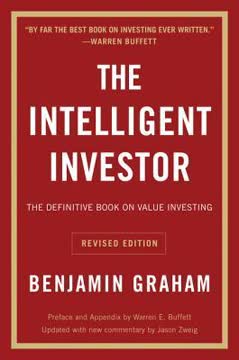
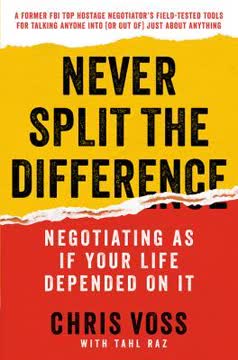

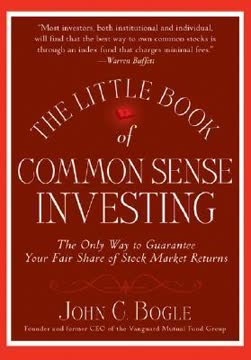

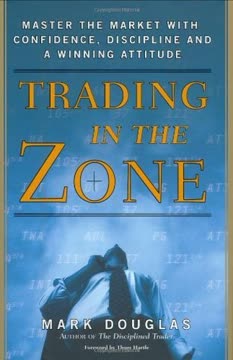


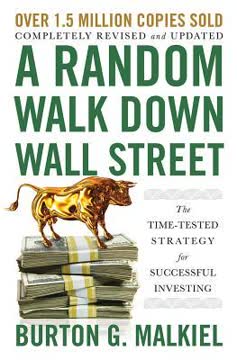

Download PDF
Download EPUB
.epub digital book format is ideal for reading ebooks on phones, tablets, and e-readers.




